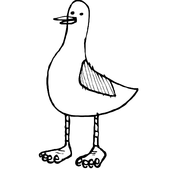That's a lot to cover, and the answer somewhat depends on what you already know.
First thing I'd recommend is getting a firm grasp on basics: concepts, terminology and mathematics involved in the subject. There's a lot of confusion going on, and for no good reason, as far as I can tell, because this things are, in fact, well defined and clearly explained - the trick is knowing where to look. Clear terminology helps immensely: e. g. when people talk, say, that "1/z is linear in screen-space" it really helps to know which z it is (disclosure: it is z in eye-space, same as w in clip-space, up to a sign).
So it helps to know: at least rudimentary basics of matrix algebra (you really don't need much to start); basics of homogeneous coordinates (how they are used in computer graphics); what the relevant coordinate systems and transformations are called (object-space -> eye-space -> clip-space -> NDC -> window coordinates); what's clipping and how it is defined (-w<=x,y,z<=+w for OpenGL); and, yes, why "1/w is linear in screen-space" (see e. g. http://www.lysator.liu.se/~mikaelk/doc/perspectivetexture/ ).
A decent text on computer graphics should clear that. I guess, "OpenGL Programming Guide: The Official Guide to Learning OpenGL" ("Red Book") works (the 1.1 version is free: https://www.glprogramming.com/red/ ), as do some others. "Computer Graphics: Principles and Practice" is a pretty comprehensive textbook, which might be overkill for the task (but then again, it's probably worth reading anyway).
To reiterate: the point of the above is to get a grasp on the concepts - you do not necessarily need to read the textbook from cover to cover (though you might want to).
Also, GLSpec (e. g. https://www.khronos.org/registry/OpenGL/specs/gl/glspec21.pdf ) can be very helpful, as it contains (unlike most texts) much of the "implementator's view" of OpenGL. But, possibly not right away. Probably same for it's DirectX equivalent.
As an aside: mathematics tends to age rather gracefully, so the older texts (math-centric ones, that is) are probably ok.
Now, that it is dealt with, on to the actual topic of writing a software rasterizer.
The best explanation I know of is the one by Fabian Giesen:
https://fgiesen.wordpress.com/2011/07/06/a-trip-through-the-graphics-pipeline-2011-part-6/
https://fgiesen.wordpress.com/2011/07/10/a-trip-through-the-graphics-pipeline-2011-part-8/
https://fgiesen.wordpress.com/2013/02/08/triangle-rasterization-in-practice/
https://fgiesen.wordpress.com/2013/02/10/optimizing-the-basic-rasterizer/
This describes the half-space rasterizer, which is predominant type in modern rendering - both hardware and software.
Another popular type (which was a lot more common some time ago) is a scanline rasterizer. Chris Hecker has a series of articles on the subject. (see http://chrishecker.com/Miscellaneous_Technical_Articles )
Some additional useful links:
https://www.cs.drexel.edu/~david/Classes/Papers/comp175-06-pineda.pdf
https://web.archive.org/web/20171128164608/http://forum.devmaster.net/t/advanced-rasterization/6145
http://blog.simonrodriguez.fr/articles/18-02-2017_writing_a_small_software_renderer.html
https://www.scratchapixel.com/lessons/3d-basic-rendering/rasterization-practical-implementation/overview-rasterization-algorithm
The task of putting that on the screen is relatively trivial - you just generate a framebuffer in RAM and put blit it on screen using whatever API you have on hand (BitBlt, StretchDIBits, SDL_BlitSurface, glDrawPixels, what have you; or generate the image right in the video-memory, if we are talking 13h).










